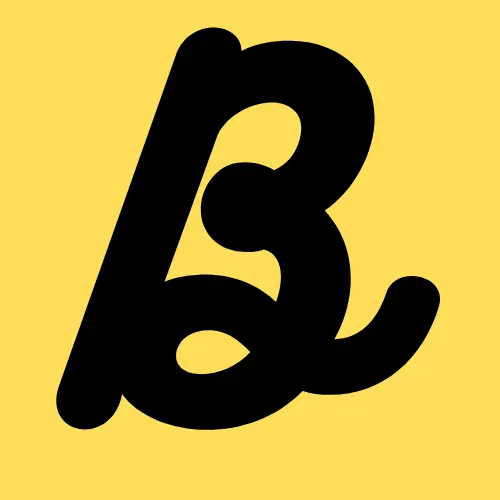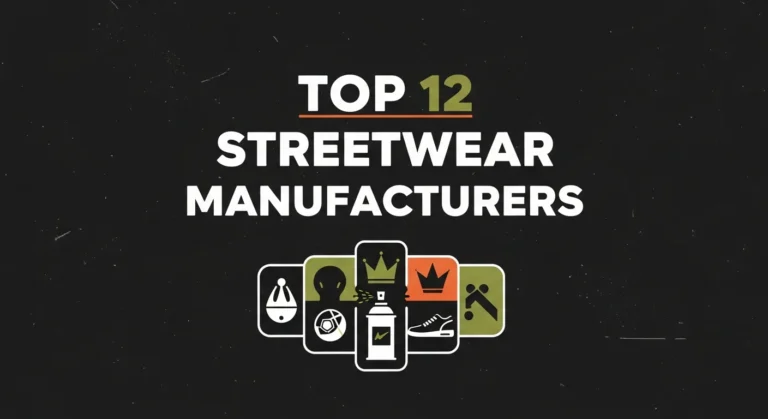How Much Does It Cost To Make A Custom Hoodie? Price Breakdown
When starting a clothing brand, knowing how much it Cost To Make A Custom Hoodie is essential for planning and budgeting. The cost to produce a custom hoodie usually falls between $7 and $25 per unit, influenced by materials, order size, and customization options. This range covers everything from fabric choice to labor and production location.

Understanding what drives these costs helps business owners make smarter decisions. Factors like fabric quality, the country of manufacture, minimum order quantities, and added features such as embroidery or tags all affect the final price.
With clear information on these key elements, brands can better manage expenses and create products that fit their market and budget.
Key Takeaways
- Material and labor choices greatly impact hoodie production cost.
- Larger orders lower unit prices through volume discounts.
- Customization adds value but increases overall expenses.
Key Factors That Influence Custom Hoodie Costs
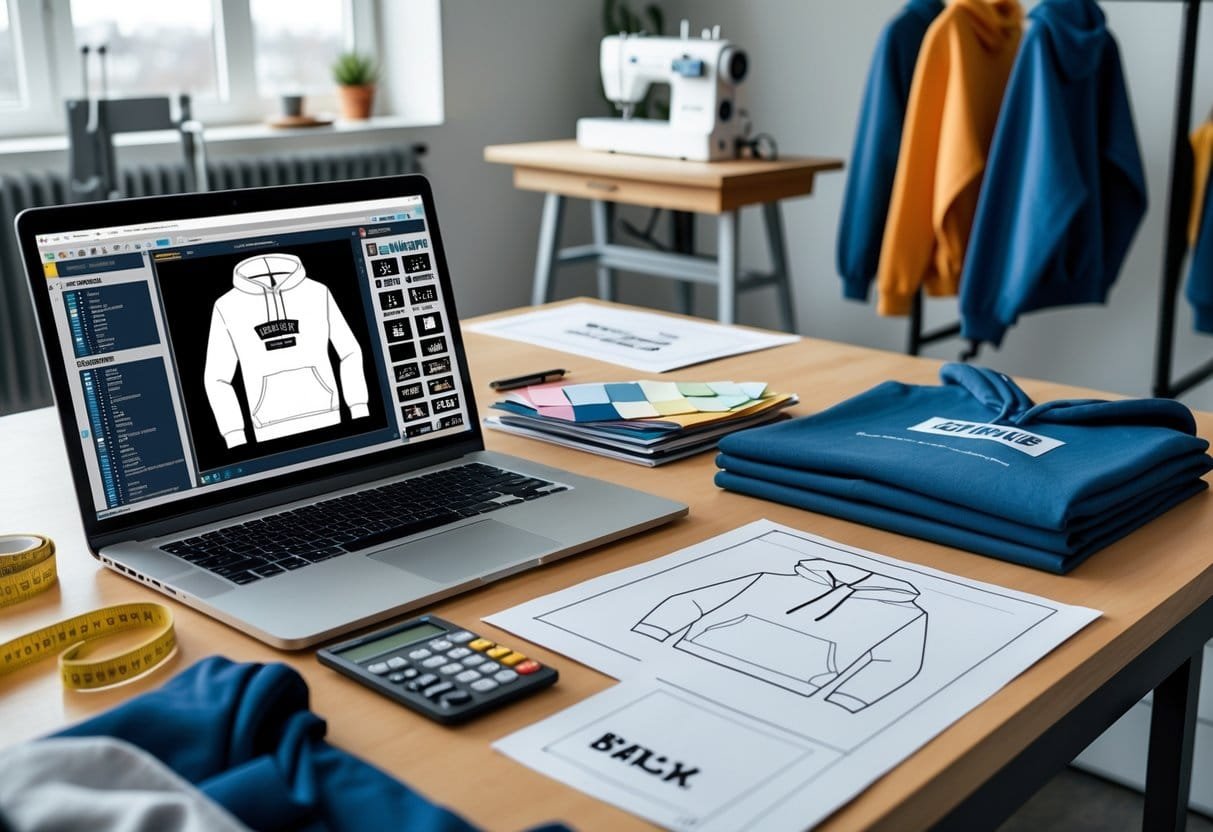
Several important elements affect how much it costs to make custom hoodies. These include the fabric used, the way the hoodie is made, the number of hoodies ordered, and where the production takes place. Each factor plays a major role in determining the final price per unit.
Material Choices and Fabric Types for Cost To Make A Custom Hoodie
Material choice is often the biggest factor in hoodie cost. Common fabrics include cotton fleece, French terry, polyester blends, organic cotton, and more sustainable options like bamboo. Cotton fleece is usually mid-range in price and good for soft, breathable hoodies. Organic cotton and bamboo are more expensive due to their eco-friendly nature.
Fabric thickness, measured in GSM (grams per square meter), also impacts cost. Hoodies with higher GSM are warmer and more durable but cost more to produce. Most quality custom hoodies fall between 280 and 400 GSM. Choosing the right fabric balances cost with the intended feel and look of the hoodie.
Production Methods and Techniques
How a hoodie is made can change its cost significantly. Basic stitching and simple screen printing are less costly. Adding embroidery, metal eyelets, zippers, or custom labels raises the price. For example, embroidery can add $1.50 to $3 per hoodie, while screen printing adds less per color.
Complex designs drive up costs because they require more time and materials. Heat transfer prints tend to be cheaper for small orders than embroidery. The use of special finishes, packaging, and branding options also influence the final price, especially if the goal is to create a premium product.
Order Quantity and Minimums for Cost To Make A Custom Hoodie
The number of custom hoodies ordered greatly affects the cost per unit. Factories often require a minimum order quantity (MOQ), usually starting at 100 pieces. Larger orders lower the price per hoodie because fixed costs—like setup fees and pattern making—are spread over more units.
For example, ordering 100 hoodies might cost $15 to $25 each, while 1,000 or more could drop to $7 to $12 per piece. Bulk discounts make it more affordable for brands to scale production. However, small brands must balance their budget and inventory capacity to avoid excess stock.
Labor and Manufacturing Location
Where a hoodie is made impacts labor costs and overall pricing. Countries like Bangladesh and Vietnam offer lower labor costs, with hoodies priced around $6 to $12 each. China provides a balance of affordability and quality, often ranging from $8 to $15 per hoodie.
Manufacturing in the USA or Turkey increases costs due to higher wages and production standards, with prices from $15 to $30 per unit. Choosing the right location depends on budget, quality demands, and shipping considerations. Transparent communication with manufacturers helps control costs while maintaining product standards.
Material Costs and Fabric Options
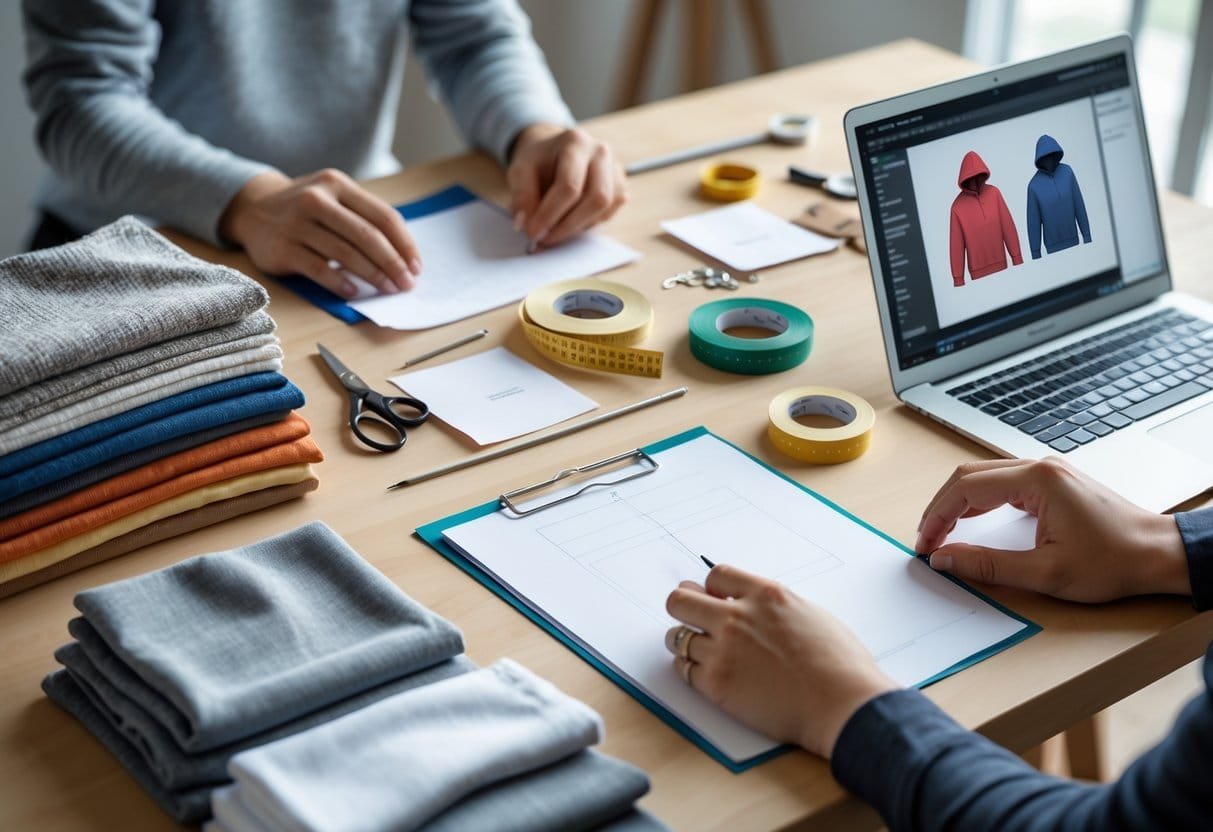
Choosing the right fabric affects both the cost and quality of a custom hoodie. Different materials vary in price depending on their type, source, and characteristics. Understanding these options helps control costs while meeting the desired look and feel.
Cotton, Polyester, and Blends
Cotton is a popular fabric for hoodies due to its softness and breathability. Prices for cotton range from about $3 to $7 per yard. Pure cotton tends to cost more but offers comfort and durability.
Polyester is cheaper, usually costing between $2 and $5 per yard. It adds strength and moisture-wicking properties but can feel less soft than cotton.
Blends of cotton and polyester combine the best of both. These blends generally cost between the price of polyester and pure cotton and offer a balance of comfort, durability, and price. Cotton/polyester blends often help reduce costs without sacrificing performance.
Organic Fabrics and Sustainable Choices
Organic cotton is grown without synthetic pesticides or fertilizers. It costs more than regular cotton, typically adding $1 to $3 extra per yard. Choosing organic fabrics appeals to eco-conscious customers but increases material expenses.
Sustainable fabric options also include recycled polyester and other eco-friendly textiles. These materials usually cost more due to limited production and higher processing costs.
Brands aiming for sustainability should weigh the higher material costs against the value organic and recycled fabrics bring to their brand image and customer loyalty.
Specialty Fabrics: Fleece, French Terry, and More
Fleece is a thick, soft fabric commonly used for warmth. Its cost generally ranges from $4 to $8 per yard. Fleece can be made from cotton, polyester, or blends, affecting its price and feel.
French terry is another popular fabric for hoodies. It has a smooth outside and looped inside, offering moderate warmth and breathability. French terry generally costs a similar amount as fleece but is lighter-weight, which can influence hoodie weight and comfort.
Specialty fabrics add variety and function but typically raise material costs. Choosing them depends on the intended use and price point of the final product.
Customization and Design Costs
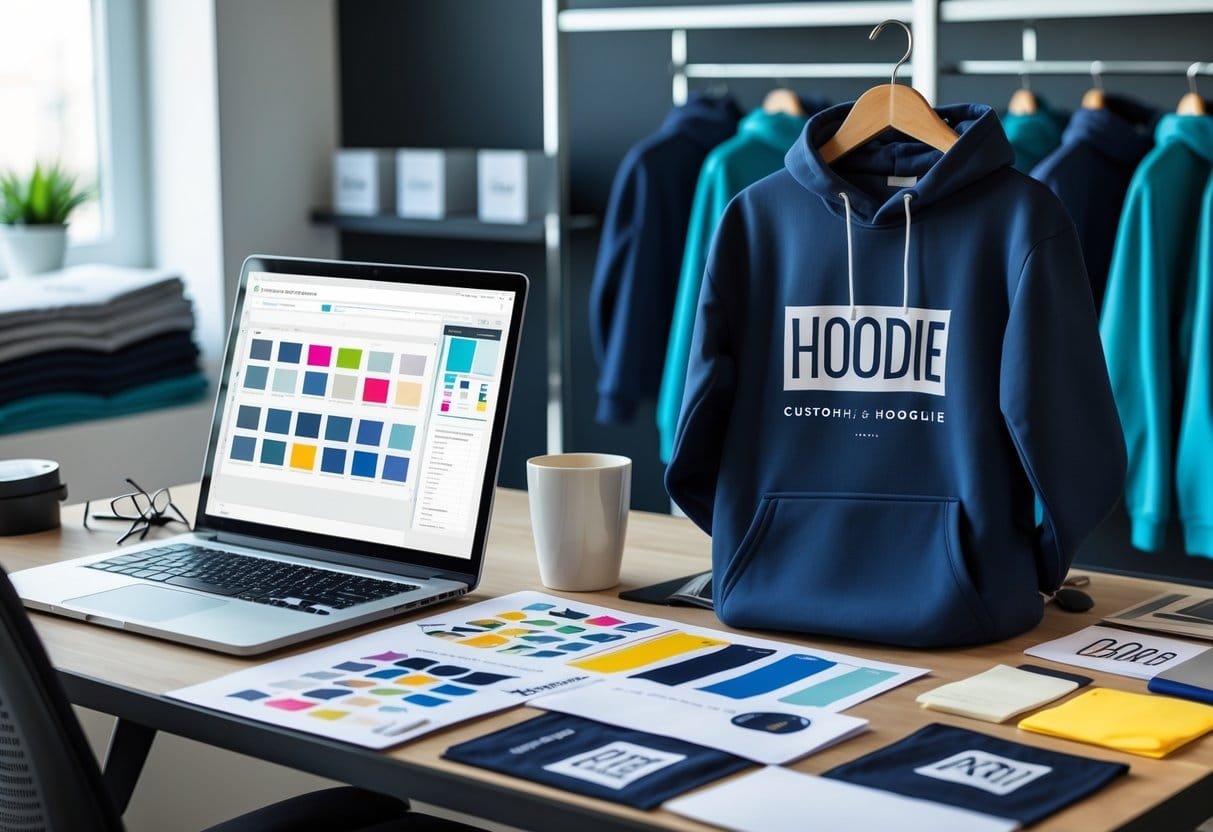
Customization affects the price of a hoodie a lot. Costs vary depending on the printing or stitching method and the design’s complexity. Some techniques cost less when making many hoodies, while others suit smaller orders but come with higher per-unit prices.
Screen Printing and Heat Transfer
Screen printing works well for designs with a few colors. It is cost-effective for large orders because setup fees are spread over many units. Basic screen printing for one or two colors usually adds about $1.50 to $3 per hoodie. More colors or bigger print areas increase the price.
Heat transfer uses vinyl or printed transfers applied with heat. This method is good for small orders and can handle multi-color designs. It is slightly more expensive than screen printing, especially for full-size prints, but allows for quicker production without screens.
Both methods have setup fees, often $20–$50 per design. Prices grow with more colors, larger print areas, or special ink types like glow-in-the-dark or metallic finishes.
Embroidery and Laser Applique
Embroidery adds stitched logos or patterns, giving a premium feel. Prices depend on stitch count and the complexity of the design. Simple embroidery can cost $3 to $6 per hoodie. More intricate designs or multiple locations raise that price.
Laser applique is less common but offers clean edges and texture. It can cost more due to specialized equipment and material use. Generally, embroidery and applique are more durable than printing but require a higher upfront setup cost.
Both methods charge extra for multiple stitch locations like sleeves or hoods. Embroidery suits brands focused on quality and a classic look.
Design Fee and Complexity
If the artwork isn’t print-ready, design fees apply. Fees range from $20 to $100 depending on revisions and detail. Complex designs with many colors or effects cost more because they need more time and resources.
Minimalist designs reduce costs by limiting colors and print areas. A small front logo typically costs less than a large, full-front or all-over print.
Design complexity also affects setup fees. Simplifying artwork can avoid multiple revisions and save money during production.
Clear communication with the designer helps prevent unexpected charges and ensures the final product fits the brand’s budget and vision.
Production and Manufacturing Expenses

The cost to produce hoodies depends on several specific factors that impact the final price. These include labor and facility expenses, where the manufacturing happens, and the size of the production batch. Each factor plays a significant role in controlling costs and maintaining quality.
Labor and Facility Costs
Labor is a major part of hoodie production expenses. Workers handle cutting, sewing, and finishing the garments. In countries with higher wages, these costs increase, raising the overall price. Facility costs like electricity and rent also add up, especially in well-equipped factories.
Automation in production can reduce labor expenses but requires upfront investment. Factories with modern machines produce faster and more consistently but may charge higher fees for their services. Smaller factories often charge more per unit due to less automation and scale.
In summary, the balance between skilled labor, factory capabilities, and automation affects how much brands pay per hoodie.
Impact of Manufacturing Country
Where hoodies are made changes the price a lot. Countries such as Bangladesh and Vietnam offer low labor costs, often pricing a hoodie between $6 and $12. China provides a middle ground with good quality and average costs from $8 to $15 per unit.
Manufacturing in the USA or Turkey results in higher prices, usually $20 or more per hoodie, due to labor costs and tighter quality controls. Brands targeting premium markets may choose these countries for better oversight and faster shipping.
Choosing the right country depends on budget, desired quality, and production speed.
Batch Size and Production Scale
The number of hoodies ordered impacts the cost per piece directly. Larger batches spread fixed costs like setup, printing plates, and pattern making over more units. For example:
| Batch Size | Cost Per Hoodie |
|---|---|
| 100 pieces | $15 – $25 |
| 500 pieces | $10 – $16 |
| 1,000+ pieces | $7 – $12 |
Small orders often cost more per unit due to production setup fees. Larger volumes lead to discounts and better pricing. Brands just starting out may pay more but get lower prices as their orders increase.
Batch size also affects production time and factory willingness to prioritize the order.
Additional Expenses to Consider
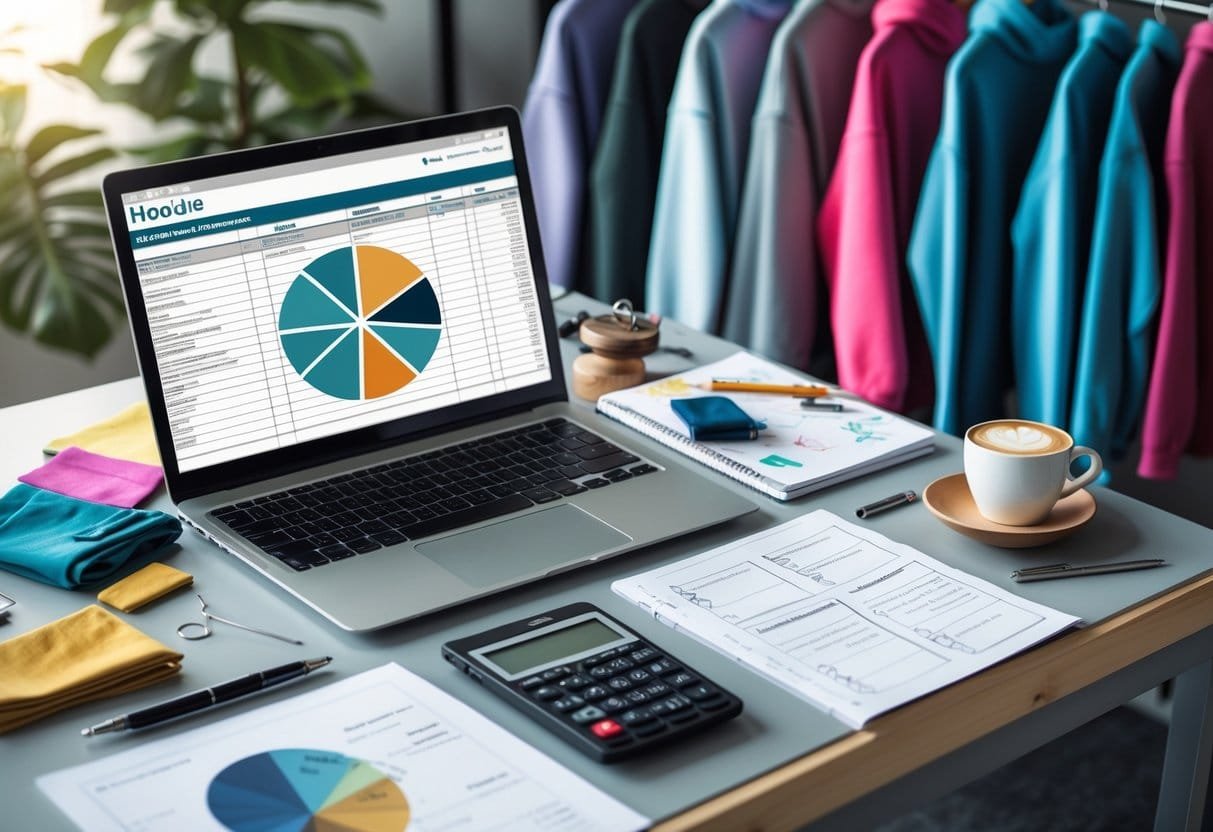
Making a custom hoodie involves more than just fabric and labor. Several other costs can add up and affect the total price. These include packaging, shipping, and some hidden fees that may not be obvious at first.
Custom Packaging and Branding
Custom packaging adds value to the product and can set a brand apart. This includes branded boxes, tissue paper, tags, and stickers. These items often cost between $0.50 and $3 per unit depending on materials and design complexity.
Brands should also consider the cost of designing packaging and ordering in bulk. Packaging that highlights the brand’s identity helps create a better customer experience but raises production costs. Sometimes investing in eco-friendly materials increases expense but appeals to conscious consumers.
Ordering packaging together with hoodies can reduce shipping costs and handling fees, but it requires coordination with the manufacturer or a separate packaging supplier.
Shipping and Delivery Fees
Shipping costs vary greatly by destination, weight, and shipment size. For hoodies, shipping fees might range from $1 to $5 per unit for domestic orders but can be higher for international deliveries.
Express or rush shipping options increase costs substantially and can add $10 to $50 or more per shipment. Brands that sell online must include these fees in their pricing models.
It is also important to factor in customs duties, taxes, and import fees when shipping internationally. These additional charges often fall on the buyer but should be considered during budgeting, especially when ordering from overseas factories.
Other Hidden Costs
Additional expenses include warehousing, order fulfillment, and returns management. Warehousing fees might range from $0.20 to $1 per unit monthly based on storage duration and space used.
Set-up fees for printing or embroidery can be $50 or more per design, spread across the order volume. Smaller orders suffer more from these fees.
Markup on electricity, equipment maintenance, and management costs also add small amounts that become significant when scaled. Planning for these hidden costs helps prevent surprises in overall expenses.
Pricing Strategy and Profit Margins

Pricing a custom hoodie requires knowing all costs involved and understanding how much profit to aim for. Balancing manufacturing expenses with a fair retail price helps ensure the brand can grow and compete. Clarity on both cost calculation and pricing tactics is essential.
Calculating Total Cost Per Hoodie
The total cost per hoodie includes materials, labor, customization, and overhead. Materials cover fabric type and weight, while labor accounts for sewing and printing time. Custom details like embroidery or special tags add to the price.
Additional costs like packaging, shipping, and production location also affect the total. Bulk orders can lower per-unit costs through economies of scale, while smaller batches usually cost more per hoodie.
To calculate precisely, add:
- Fabric and materials cost
- Labor and production fees
- Customization expenses
- Packaging and shipping
- Any overhead or administrative costs
This total is critical for setting a price that covers expenses and allows profit.
Setting Retail Prices for Your Brand
Retail prices must cover the total cost and include a profit margin that fits the market and brand positioning. Common profit margins range from 50% to 70% for retail sales and 20% to 40% for wholesale.
Pricing should also consider competitor prices, customer expectations, and brand value. Limited-time offers or discounts can attract new buyers but should not reduce the overall perceived value.
Many brands use a markup formula:
Retail Price = Total Cost × (1 + Desired Profit Margin)
For example, if a hoodie costs $15 to make and a 60% margin is targeted, the price will be $24.
Proper pricing supports sustainable growth while keeping customers satisfied.
Frequently Asked Questions
The Cost To Make A Custom Hoodie depends on several specific factors. These include the materials used, production volume, and the level of design detail. Additional expenses beyond the base price also play a role in the total cost.
What factors determine the production cost of a custom-branded hoodie?
Material quality, country of production, order size, and customization options all affect the cost. Labor and shipping costs vary by location and supplier. The number of units ordered changes how much each hoodie costs.
How can the choice of material affect the cost of manufacturing custom hoodies?
Different fabrics have different prices per yard. For example, cotton fleece is cheaper than organic cotton or bamboo blends. Heavier, thicker fabrics also cost more because they use more material.
What is the average price range for producing a high-quality custom hoodie?
High-quality hoodies generally cost between $16 and $25 per unit to produce. These hoodies have features like dense fabric, double stitching, and branded labels. They often sell retail for much more.
How does quantity influence the per-unit cost in custom hoodie production?
Ordering larger quantities reduces the cost per hoodie. For example, a 100-piece order might cost $15 to $25 each. An order over 1,000 pieces usually lowers the price to $7 to $12 per unit.
What additional costs should be considered when budgeting for custom hoodie manufacturing?
Extras like embroidery, screen printing, metal zippers, and packaging add to the cost. Embroidery can add $1.50 to $3 per hoodie. Labels and custom packaging also increase expenses slightly.
How does customization complexity impact the overall cost of creating a custom hoodie?
More complex designs and added features increase costs. Multiple colors in printing or detailed embroidery raise the price. Even small details like metal eyelets or special tags can add to the final cost.
